The other day, Bill started writing a blog post about how he uses a view camera to get some of the photos he has taken to match his vision. We both quickly realized that a) it was going to be way too long for one post, and b) it was incomprehensible to anyone who don’t use view cameras. So, we decided to start with a post on Bill’s large format camera, and then in future posts, explain how he uses it to get the photos he envisions.
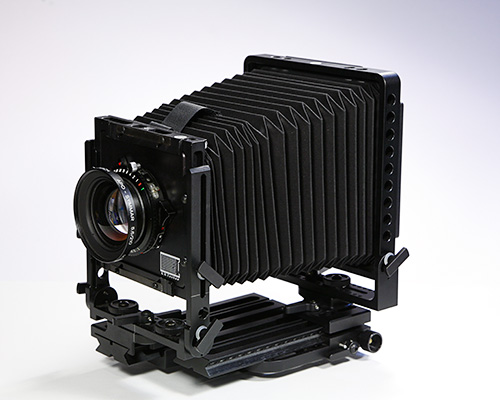
(c) 2008 William Lawrence
For his landscape photographs, when possible Bill likes to use a 4”x5” view camera. Currently he is using a K. B. Canham DLC45 aluminum field camera, shown above with a 210 mm lens on it. The camera is essentially a light-tight box, thanks to the bellows, that lets the lens focus light on the ground-glass back (to focus), and the film (when actually taking a photograph). For a 4×5 camera, the Canham is reasonably light, and folds up to allow storage in his back-pack.
The camera focuses by moving the front and rear standards closer or farther apart, with longer focal length lenses requiring more distance (and more bellows extension), and shorter focal length lenses requiring less. For example, the camera with his 125 mm lens (below), requires much less bellows extension, making it look more “compact” to focus at a given distance than the 210 mm lens.
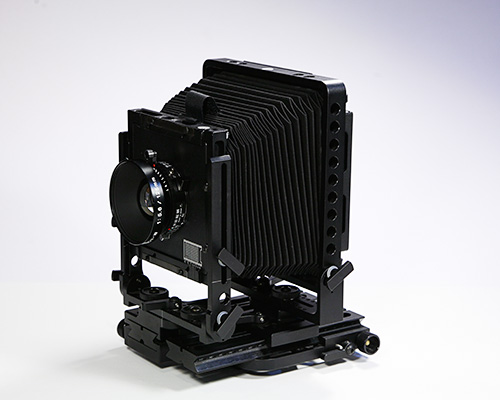
(c) 2008 William Lawrence
Bill likes using a view camera for several reasons. First, instead of that little viewfinder you get on a 35mm or digital SLR, you are viewing the scene (although upside down and backward) on a 4”x5” piece of ground glass, and essentially seeing exactly what is going to be exposed to the film.
Second, the slow setup and focusing makes photo taking with a view camera a more thoughtful and deliberative process, which is helped by the large ground glass image. A standard view camera is not a good choice for fast-paced, rapid fire photography. In addition, the camera allows you to do movements that you can’t do on a 35mm or DSLR camera without special lenses.
Finally, the image is recorded on a 4”x5” piece of film, large enough to produce large prints with excellent quality. To put this in perspective, the top image is a slide taken with 35mm transparency film, place on my light box so that you can see the image on the film. The image is about 1”x1.4” image. The transparency below is a 4×5 transparency on the same lightbox, to give you a sense of the relative sizes of the image. The 4×5 produces a huge image relative to 35mm and dslrs. When people ask how large can we print some of Bill’s photos taken on 4X5 film – we just look at them and ask what wall would you like to cover with it?
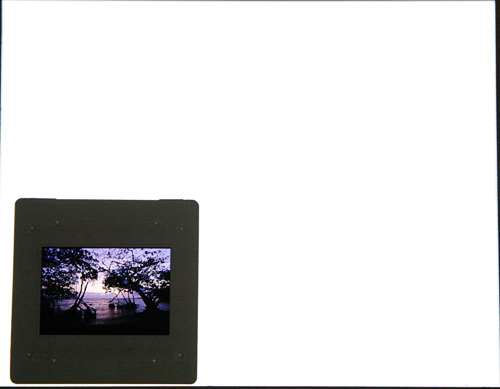
(c) 2008 William Lawrence
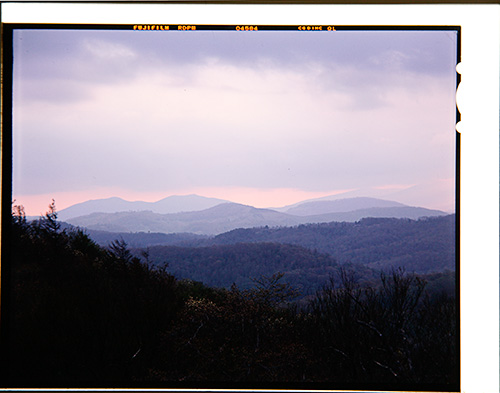
(c) 2008 William Lawrence
The camera has a few downsides. It’s big – below is a comparison of the camera to one of our dslr cameras, and it requires a tripod to use. It is also expensive to use. One shot costs about $5 for film and processing. For this particular camera, you also have to call it a “K. B. Canham” – if you just call it a “Canham”, everyone thinks you are saying “Canon” (which makes lovely cameras, but no view cameras).
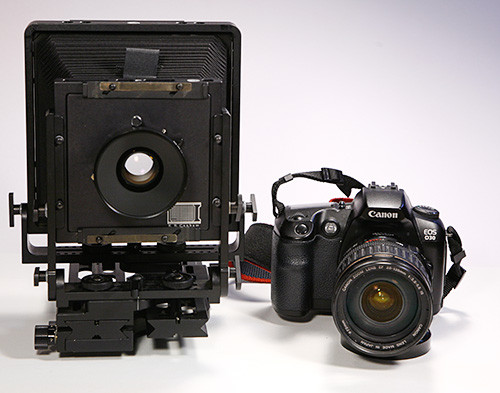
(c) 2008 William Lawrence
But despite those limitations, it is a fun camera to use. And, most importantly, Bill ends up with photographs that he is happy with when he uses the camera – which really is the best measure of whether any camera is the right one to be using. In the coming weeks, we’ll have more posts talking about Bill uses the large format cameras to get the photos that he wants.